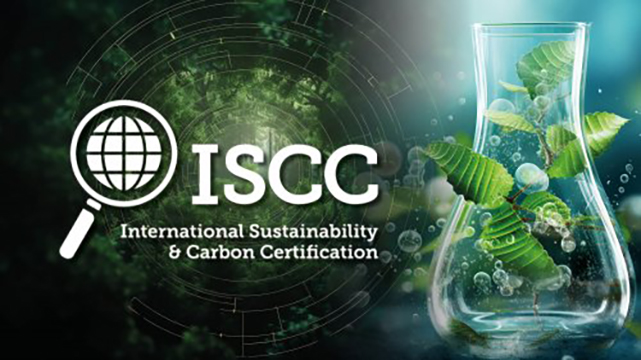More news
- Focus on industrial: Powering the energy industry during extreme heat
- Focus on powder coatings: The coatings industry’s transition to PFAS/PTFE-free solut...
- “We see sustainability as a purpose, as a reason for doing business” – P...
- Focus on industrial: High-performance coating protects tanks at biopolymer production plan...
- Focus on powder coatings: Novel high-speed crosslinking technology

The coatings and application technologies for the robotics market is set for significant expansion, with an anticipated valuation of US$18,141.9M by 2023. The coatings and application technologies for the robotics market is poised to achieve an impressive valuation of US$38,925M by 2033 featuring a promising CAGR of 7.9% from 2023 to 2033.
Key market trends and highlights
The increasing trend of electric automotives is set to impact the industrial robotics industry significantly. Car manufacturers are increasingly using automated robotic systems for high-volume vehicle production, contributing to the growth of industrial robotics.
The incorporation of machine learning and artificial intelligence (AI) technologies into industrial robots is positively influencing the sector. These advancements enhance the capabilities and efficiency of robotics, making them versatile and adaptable to various tasks.
Rising labour and factory insurance costs are compelling manufacturers to introduce industrial robotics for cost-effective and efficient resource allocation with minimal downtimes. Robotic systems also significantly reduce error rates while increasing production output, making them an attractive option for enhancing operational efficiency and profitability.
The coatings and application technologies for the robotics market faces environmental challenges due to the pollution and VOC emissions associated with these coatings. Environmental concerns may impede the market’s growth
2018 to 2022: Historical analysis vs 2023-2033 market forecast projections
The scope for global coatings and application technologies for the robotics market rose at a 4.68% CAGR between 2018 and 2022. The market is anticipated to develop at a moderate CAGR of 7.9% over the forecast period from 2023 to 2033.
The COVID-19 pandemic has triggered a significant shift in how industries approach their business models and manufacturing processes. The highly contagious nature of the disease forced many key sectors to halt production temporarily, disrupting traditional demand-supply dynamics.
Stakeholders across various industries have turned to automation, deploying robots and other automated equipment in their plants and manufacturing sites to ensure operational continuity and minimise risks. The strategic move has resulted in a notable surge in the sales of robotic coatings and application technology software.
The trend of automation, driven by the need for workforce safety and operational resilience during the pandemic, is poised to persist even in the post-pandemic world. Industries are more focused than ever on enhancing workflow efficiency and streamlining their operations.
Investments in robotics and robotic process automation are on the rise. This continued investment is expected to create a substantial and expanding revenue pool for the coatings and application technologies for the robotics sector in the foreseeable future.
The primary driver for the coatings and application technologies for the robotics market is the growing adoption of robotics across various industry verticals. Industries increasingly rely on robotics to automate critical processes. It further leads to a high demand for coatings and application technologies that enhance the functionality and durability of robotic systems.
Both at the global and local levels, there is a notable trend of expanding production capacities. As industries expand their operations, the need for advanced robotic systems with efficient coatings and application technologies increases, driving market growth.

READ MORE:
Using AI for sustainable ammonia production
Creating opportunities with AI-powered tools and fractional consultants
Restraining factors
One of the significant challenges facing the industry is the environmental impact of coatings and application technologies used in robotics. Many of these coatings emit Volatile Organic Compounds (VOCs) that can harm the environment and contribute to pollution. Addressing these environmental concerns and developing eco-friendly alternatives is crucial.
The coatings and application technologies for the robotics market must navigate complex regulatory frameworks related to environmental standards and safety. Meeting these regulatory requirements can be a challenging and costly endeavor for manufacturers and may impact market growth.
The cost of advanced coatings and application technologies can be a limiting factor for some industries, particularly small enterprises. Balancing the need for efficient robotics with budget constraints can pose challenges for market adoption.
The market is dynamic, with continuous technological advancements in robotics. Staying competitive requires constant innovation, and companies may face challenges in keeping up with the latest technological trends and integrating them into their products.
Waterborne coating technology’s market dominance
Waterborne coating technology is poised to reign supreme in the global market, characterised by a substantial market valuation and a notable CAGR. The technology’s ascendancy is underpinned by its eco-friendly attributes and the growing emphasis on sustainability in the coatings industry.
Waterborne coatings offer a compelling combination of performance, durability and reduced environmental impact, making them a preferred choice for diverse applications. Their versatility and compliance with stringent environmental regulations position them as a dominant force in the coatings landscape.
It is anticipated to exhibit a significant expansion within this category throughout the projection period. Powder coatings have been gaining traction due to their efficiency, durability and versatility, particularly in applications requiring a resilient finish.
Powder coatings emerge as a compelling solution as industries seek coatings that can withstand demanding conditions while minimising environmental impact. Their rising demand signifies a shift toward sustainable and high-performance coating solutions, making them a dynamic force in the coatings market’s evolution.
Acrylics are the cornerstone of the coating industry growth
The utilisation of acrylics within the coatings industry has witnessed extensive growth and this trend is poised to continue its upward trajectory. The acrylic segment is on track to achieve a substantial market valuation by the end of the forecast period, reflecting its remarkable growth rate.
The segment expansion can be attributed to several factors, including the exceptional performance characteristics of acrylic-based coatings. Acrylic coatings are renowned for their durability, versatility and ability to provide an attractive finish across various applications. Their resilience against harsh environmental conditions and the capability to maintain colour and gloss over time make them a preferred choice.
Competitive landscape
The global coatings and application technologies for robotics market is quite fragmented. Companies are even increasing their local manufacturing to reinforce their position in the local market. The majority of businesses enter the market with the assistance of local suppliers. These firms also expand their presence in other locations by acquiring local partners.
In July 2023, AkzoNobel took steps to improve its industrial operations in North America and deliver innovative solutions to customers in the region.
In July 2022, Nippon Paint aimed to conduct business activities to support and enable sustainable development everywhere it operates. It also aimed to include the three elements – economic, social and environmental– in a balanced and integrated manner.
These insights are based on a report on Coatings and Application Technologies for Robotics Market by Future Market Insights







